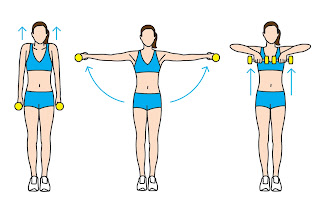Cure neck pain caused by sitting at a computer all day with five simple exercises.
The workout that nips neck pain in the bud
If you spend much time hunched over a computer, there’s a good chance you’ve experienced pain in the trapezius—the muscle that extends from the back of your head, across your shoulders, and down your back. Research offers a simple, effective remedy: five exercises that cut pain by more than 50 percent among women with tight neck and shoulder muscles. These are sneaky reasons your neck suddenly hurts. The workout: For each move, perform three sets of 12 repetitions, gradually increasing the weight as you get stronger.
Shrugs
Stand with a 15- to 25-pound weight in each hand, arms at sides. Lift shoulders up toward ears and lower slowly.
One-arm row
With right knee on bench, lean on right hand. Slowly raise left elbow to bring a 12- to 20-pound weight to chest level; lower slowly. Switch sides; repeat.
Upright row
With a 4- to 10-pound weight in each hand, raise weights to middle of chest, keeping them close to body. Lower slowly.
Reverse fly
With a 2- to 5-pound weight in each hand, bend forward to a 45-degree angle. Elbows slightly bent, lift weights to shoulder height; lower slowly.
Shoulder abduction
With 5- to 8-pound weights in each hand and elbows slightly bent, lift weights until arms are parallel to floor. Lower slowly.




























